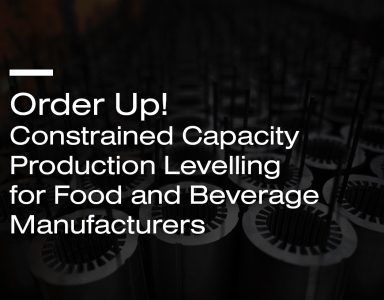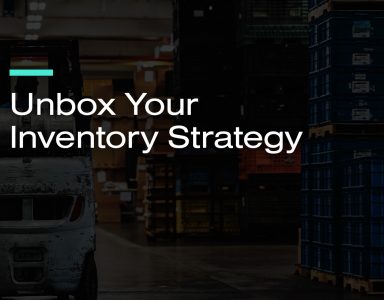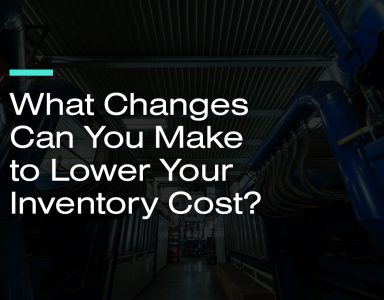At DemandCaster, we are dedicated to helping small- to mid-sized manufacturing and distribution companies better manage their planning and inventory. We try to do that using simple concepts, intuitive tools, and straightforward processes.
In our work with clients, we have come to realize unrealistic expectations are set regarding inventory turns and the level of excess and obsolete inventories (E&O). Our contention is that E&O is like cholesterol, the bad kind, in the supply chain. It clogs up and diminishes the productivity of warehouses and ties up precious working capital.
Too often, we see companies trying to improve inventory without addressing the E&O. There is a natural reluctance to address this because the goods are often un-salable. They either have to be scrapped or sold at very low prices which both reduce the bottom line. To really make it interesting and exciting, companies do not usually pay attention to the E&O until it is the size of a mountain. Rarely do we look at the mix of active (Materials & Finished Goods) and E&O inventory and how they both effect inventory turns.
Consider a fictitious company with $1,000 in sales. It could $1,000 M or K, it does not matter. The Cost of Goods Sold (COGS) for this company are 36% which is representative of the kinds of businesses we work with. For the purposes of this exercise, we are going to assume that sales and COGS are static. We begin with active inventory at $50 and E&O at $30. This makes E&O at 37.5%. This is a bit on the high side but not as rare as you might think.
The table below shows that our company is turning the inventory 4.5 times per year. If E&O were eliminated the turns would be 7.2. Thus, the dead weight of the E&O accounts for or absorbs 2.7 turns.
|
|
Avg Inventory |
Sales |
COGS % |
COGS |
Turns |
|
Matls & FGs |
$50.0 |
$1,000 |
36.0% |
$360 |
7.20 |
|
E&O |
$30.0 |
|
|
|
-2.70 |
|
Total |
$80.0 |
|
|
|
4.50 |
Management has challenged us to get to 10 turns. Can we achieve this without touching the E&O? Sure we could, our little calculator show that we would have to reduce our active inventory to $6, a reduction of 88%. The active inventory would then turn 60 times to give us 10 turns overall with the E&O absorbing 50 turns and comprising 83% of total inventory.
|
|
Avg Inventory |
Turns |
|
Matls & FGs |
6.0 |
60.01 |
|
E&O |
30.0 |
-50.01 |
|
Total |
36.0 |
10.0 |
This is certainly an extreme example. What if we were to merely cut the active inventory in half from $50 to $25? How much would we have to reduce the E&O to get to 10 turns overall? We see that E&O would have to go from $30 to $11 which is a reduction of 63%. In this scenario, E&O is still 31% of total inventory.
|
|
Avg Inventory |
Turns |
|
Matls & FGs |
25.0 |
14.40 |
|
E&O |
11.0 |
-4.40 |
|
Total |
36.0 |
10.00 |
If this company were our client, we would recommend the following scenario to get to 10 turns:
- Work down the E&O to $5. This would reduce E&O by 80% and make it only 17% of total inventory.
- Reduce the active materials and finished goods by 40% to $30.
|
|
Avg Inventory |
Turns |
|
Matls & FGs |
30.0 |
12.00 |
|
E&O |
6.0 |
-2.00 |
|
Total |
36.0 |
10.00 |
This should be the goal of this company if they truly want to get to 10 turns a year. They will have freed up $44 in working capital.
The goal, as most goals are, is easy to establish. Reducing inventory by $44 or 55% is much more difficult. It will be difficult to reduce the active materials and finished goods. This will require adoption of lean methodologies along with disciplined and focused continuous improvement activities. It is not easy but can happen provided that management makes it a priority. This can be done entirely within the supply chain for the most part. The limiting constraints are:
- The sales patterns: smooth vs. high month end peaking.
- Supplier lead times.
Reducing E&O is another matter. This cannot be done within the supply chain unless, in the rare exception, E&O goods can easily be converted into current salable goods. E&O reduction requires the coordination of the supply chain, sales, and finance. In this arena, finance is the big dog. Finance sets the rate at which E&O goods can be scrapped or sold at deep discount. This is a good thing because, as stated above, either of these actions will impact profits.
Even before E&O is reduced to the desired level, the supply chain, sales, and finance must work together to establish an E&O policy that includes:
- Reviewing and revising the definition both Excess and Obsolete
- Quarterly actions to taken to keep the E&O molehill from becoming a mountain.
Questions you can ask/Actions you can take right now:
- Do you know how much E&O you have? How many turns that sludge inventory is absorbing? If not, you should.
- How many turns should your business be at? How do you plan to get there?
- Join the discussion on this posting to share your:
- Successes in reducing and managing your overall inventory and E&O
- Frustrations with not being able to reduce and manage the above as quickly as you would have hoped
In a future post, we will introduce our web-based inventory calculator. The tool will help you calculate your total turns, the active inventory turns, and the amount of turns absorbed by your E&O.


